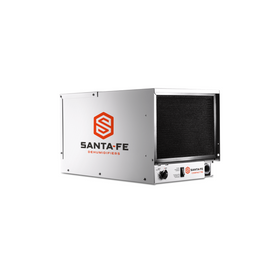
Permaculture: Three Books to Consider
Last Updated: Apr 13, 2025Resources for people curious about permaculture continue to grow, and it can be a challenge for someone new to navigate through the numerous texts. Is it possible to start with any permaculture book? While there are several books out there, I picked this article's books based on a diverse range of readability and information.
Table of Contents
- The Vegetable Gardener's Guide to Permaculture
- Practical Permaculture: for Home Landscapes, Your Community, and the Whole Earth
- Permaculture A Designers' Manual

The Vegetable Gardener's Guide to Permaculture
The book I'd like to begin with is "The Vegetable Gardener's Guide to Permaculture" by Christopher Shein with Julie Thompson. This was the second book I read on my permaculture journey. Where the first text was confusing, I found that the vegetable gardener's guide did well to ease newcomers into the permaculture world.
What's great about this book is how easily it lays out concepts and guides, making it quite readable. It is written, as the title implies, for your average vegetable gardener who may be inclined to use a few plants in the corner of the lot. It then walks you slowly through the concepts of permaculture, giving you images and explanations.
There is no shortage of colorful pictures in this book, showing the beauty that an edible yard can produce. From vined trellises to diverse alley crops, and packed greenhouses, the images give you a view of what a functioning system can provide at home. There are also several drawn diagrams explaining garden features like herb spirals, sheet mulching, and even seed balls.
The beginning of the book is structured to give a basic permaculture crash course. In comparison to other books, it's an excellent source of information in easy to read bites. The sections on the three permaculture ethics are concise, giving adequate information without overwhelming a new reader. The permaculture principles are similar, giving a helpful breakdown of the information in manageable, numbered paragraphs.
Several conceptual designs included describing features and uses as well as materials for construction. These include examples of a hügelkultur mound, raised bed, herb spiral, and even an A-Frame level for your landscape! These are helpful for gardeners who are having trouble grasping some of the more general permaculture techniques.
The book breaks down various fruits, vegetables, herbs, flowers, and even edible weeds, providing options and uses for each. This list includes a chart of dynamic accumulators, which can be used to fill in your yard and act as either compost or beneficial insect attractors.
Overall, this book is easy to read and full of useful information for beginners. With a fairly average cost, I found that this book provided adequate information for the price point. It makes a good coffee table read because of its numerous photos and lends itself to being a great conversation starter.

Practical Permaculture: for Home Landscapes, Your Community, and the Whole Earth
Practical Permaculture, by Jessi Bloom and Dave Boehnlein, is an excellent middle-of-the-road book for readers. This reading material was selected for the Permaculture Design Course provided by Oregon State University and contained a depth of information. This wealth of knowledge can be a bit overwhelming if you are new to permaculture, but the authors explain it well.
In browsing the table of contents, you see more focus on what factors into a property design. Concepts covered include water storage, soil care, waste management, energy efficiency, and shelter, to name a few. The chapters provide great descriptions and breakdown concepts with walkthroughs and explanations. And while there are some pictures, most of the designs in the book are artistic renderings.
The breakdown of the ethics and principles were comparable to other permaculture books. The ethics sections add detail through relatable examples, which I found made them easier to grasp. They even include the unofficial fourth permaculture value, transitional ethics. The principles section includes added questions to engage the reader in thinking about the design of their property. You will also find information on a few niche permaculture zones, including Zone 00 (mind and body), Zone 0 (frequently used house rooms), and Zone 6 (local community).
The provided list of different types of plants is a great addition. What's different here is that they break down the plants, giving dimensions, planting zone, sun, and water requirements. The book touches on agroforestry through the use of layering a backyard food forest. The types of plants to consider presented a range - from woody and herbaceous perennials to trees and ground covers. It drives home the idea of natural succession and how slow change of a site over time isn't a bad thing.
Recurring natural patterns are also covered. Straight lines occur predominantly in human society, and while they do occur in nature, they're often not for long distances. More common natural patterns like waves, spirals, and fractals happen in the wild and can add even more character to your home design.
The book does well to acknowledge several concepts of waste. A few examples of waste would include food and yard waste, heat, and even the human waste stream. We live in a throw-away society, with literal tons of still functional items that find their way into the garbage. One day, the human waste stream could be considered a valuable resource.
I found this book to be readable, but even more so, with some remedial permaculture learning already under your belt. The amount of information between the covers makes it well worth its price point. My book has many pages highlighted, underlined, and sticky noted for quick recall, and it has become one of my go-to design books.
Shop All Special Offers
Shop Special Offers on vetted Home Improvement products at low prices while supplies last.

Stiebel Eltron Accelera 300 E Heat Pump Water Heater
Stiebel Eltron
In Stock

Stiebel Eltron CON 300-2 Premium Wall-Mounted Convection Heater - 202030
Stiebel Eltron
In Stock

Santa Fe Compact70 Dehumidifier
Santa Fe
In Stock

Victory Range Hood Sunset 600 CFM White Flush Ceiling Mount Dimmable LED Range Hood
Victory Range Hoods
In Stock

Drolet Escape 1800-I Wood Stove Insert Trio (25ft) DB03127K
Drolet
In Stock

Victory Range Hood Sunset 600 CFM Flush Ceiling Mount Dimmable LED Range Hood
Victory Range Hoods
In Stock

Stiebel Eltron DHC-E 8/10-2 Plus Point-of-Use Electric Tankless Water Heater - 202145
Stiebel Eltron
In Stock

Stiebel Eltron CON 150-1 Premium Wall-Mounted Convection Heater - 202026
Stiebel Eltron
In Stock

Drolet Escape 1800-I Wood Insert Trio (35 FT) DB03128K
Drolet
Out of Stock

Stiebel Eltron Accelera 220 E Heat Pump Water Heater
Stiebel Eltron
In Stock

Permaculture A Designers' Manual
The third book I would like to recommend is Permaculture A Designers' Manual, by Bill Mollison. It is an informative book, but don't be fooled, this is a dense textbook. I would not recommend this book for your foray into permaculture. The designers' manual is an excellent option after you've read a few books, watched some videos, and want to get into the specific functions of permaculture. The designers' manual will inevitably become a part of your library one day if you're looking to design large systems.
The table of contents reveals permaculture theories and concepts labeled into chapters and subchapters. While Mollison touches on permaculture ethics, it differs from other texts. You'll find the details of the ethics and principles in this book focuses more on the theory behind them.
Several sections touch on traditional knowledge, which translates to skills, designs, and hypotheses drawn from First Nations, Native American, and Aboriginal Australian customs. The art and craft of reading tree rings to determine fire history in a fire-prone site, for example, gives you the information on what direction to expect fires. Tracking the 19-year moon cycle, using petroglyphs alone, can provide great details of how nature responds to our lunar companion. Even looking at how early sea-farers used to specialize in niche skills to ensure success, shows how close humans once were to nature.
This book gives focus to larger design systems, including large scale aquaculture that encompasses several pond systems. These are designed in a way to mimic nature's patterns and enhance them to support humans. The chapters on landscape can vary from humid tropics to cold climates, including dryland habitats, to aid designers in multiple strategies for each environment.
This book does well to examine permaculture on a global scale and how individual climates function differently. Mollison explains that there is no "magic fix" for our current climate crisis but lots of small changes that create a considerable impact.
This book can be challenging to read but makes up for it in the wealth of information it provides. Look at it more like a university textbook that you may read over once but keep around because it's useful. The price point on the book is a bit high, but the amount of information contained makes it worth the purchase. The designers' manual is an excellent book if you're a landscape designer, architect, or any professional looking to develop sustainable systems for your property.
Tanner Sagouspe
Tanner Sagouspe has a Masters in Environmental Management and is a Permaculture Designer who promotes tackling the climate crisis at home.
